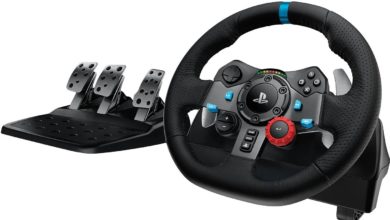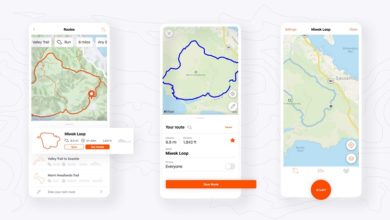Know your Smartphone Manufacturer Part 1
Mobile Phone a.k.a cell phone a.k.a handheld phone. It is difficult to find a person without a cellphone, whatever economic condition he/she is in. Most of you might be using a cellphone for years now. But have you ever wondered to know more about the manufacturer of your phone? Ever felt that you need to know just a bit more about the brand? Who are they? Where are they from? How did they enter mobile phone business? Well, this series of articles are going to do just that. I am going to focus on the history of these major mobile phone manufacturers and this is the first article of the series. This company is slowly but certainly heading towards centennial anniversary (more than a decade away). We have seen many mobile phone manufacturers reel during recession or when the landscape shift happens. But this company withstood ‘The Great Depression’, ‘World war II’, many economic recessions, countless landscape shifts, cut-throat competition. Just when the world felt that the company is going down, they strike back with a revolutionary product. They gave the world top-class management/process guidelines(six-sigma). This is Motorola and they changed the way world communicated. 25-September-1928 Location: 847, West Harrison Street, Chicago, Illinois, USA Paul Galvin and his brother Joseph Galvin started ‘The Galvin Manufacturing Company’ to produce battery eliminators that were used to connect battery powered radios to home AC. Galvin brothers started the company with five employees and 565$ cash. The Great Depression & the rise of Galvin Company The rapid decline in sale of battery eliminators meant that Galvin had to look for a new market and a new product. In the year 1930, Galvin created their first iconic product, ‘car radio’. The first model, 5T71 looked like this: 5T71 was the first commercially available car radio and was instant hit as it solved the reception issues that kept many away from fitting radio to automobiles. Motorola was selling these radios for around 120$ and being a huge success, they started pulling distributors and started expanding the company to other parts of the country. Taking a step further, Motorola started selling car radios to police department. Named Motorola police cruiser radio receiver, these are specially made one-way radios for police to transmit police broadcasts (bit similar to what we see in today’s police vehicles). By the end of great depression, Motorola transformed from a company that sold car audio to a pioneer in home audio (introduced in 1937) and even formed a police radio department. World War II & and Walkie-talkie The two-way radio, designed by Donal L Hings, Alfred J Gross and engineering teams at Motorola, SCR-300 was one of the revolutionary products invented by Motorola and showed their might in radio technology. Popularly known walkie-talkie, SCR-300/SCR-536 made tremendous impact on the way that troops communicated during world war II. Do note that current day’s walkie-talkie is very much different from the original walkie-talkie. Walkie-talkie: rear mounted with telephone like unit to communicate
Handie-talkie: handheld radio, similar to current day walkie-talkie but with less power and performance
Even to this day, Motorola enjoys a huge market share in two-way radio market and me personally saw people from building security to police to defense use Motorola handsets for communication. The radio-active ‘40s: Don’t get confused by the term radio-active. This was the decade when Motorola made giant strides in radio technology, releasing:
- FM two-way radio system (1941)
- portable FM two-way radio (1943)
- Radio-telephone fitted in car (1946)
- Portable two-way radios for businesses (1947)
In the year 1947, Paul Galvin changed the name of their company to Motorola Inc. derived from Motor (auto) and -ola (sound). Television Yes, even I was surprised to know that Motorola once manufactured Television units. In the year 1947, Motorola entered the television market that was adopted by just 0.5% of households in USA. Their first Television, named Golden View was an instant hit and the below ad explains the reason: This model was a 120$ cheaper than competing models and this aggressive pricing and more compact size meant that Motorola took 4th spot in market share in just few months. The resulting price war led to more than half of American households adopt TV by 1954 and 90% had a TV in their home by 1962. By 1950, Motorola transformed into a major brand with thousands of employees, led by people friendly Galvin. they also held huge market-share in car radio business with American car manufacturers like Ford opting for Motorola car radios. New CEO, new logo and new strides: In the year 1955, Motorola changed it’s logo to popular “emsignia” and in the year 1958, Robert Galvin, son of Paul Galvin became the CEO and it is said that it was his era that put Motorola right on top and turned the company into billion $ enterprise. Production side, in the year 1955, Motorola released world’s first high power (3 amp) transistor (Germanium transistor), which was also the first ever semiconductor that was mass produced at Motorola. It’s main use was in car radios and this is how it looked like:
In the year 1963, Motorola invented truly rectangular color picture tube which has set the standard for CRT TVs to this date
Compare this with the picture of Motorola Golden View and you will understand how much of a giant stride it was in those days. The Space Mission During the 50’s Motorola started working with NASA in US Space Mission and it is said that since then, every space flight has Motorola equipment. In the year 1969, Motorola made history as their transponder was used aboard Apollo 11 to transmit telemetry, tracking, voice communications and TV signals between Earth and Moon. This transponder relayed man’s first words on Moon, the famous quote “That’s one small step for man, one giant leap for mankind” by Neil Armstrong to Earth. Reorganizing and change of focus Motorola did lot of reorganizing in the 70s and this led to the current day Motorola. To focus more on electronics and hi-tech equipment, Motorola sold it’s consumer products division like television and car audio. By early 80s, Motorola became an electronics, semiconductor and hi-tech equipment giant and in 1976, they moved to Schaumburg which remained as Motorola’s headquarters to this day. A new era
Date: 03-April-1973
Location 1: New York Hilton Hotel, New York for a press conference
Location 2: Alliance Capital Building, NY ( was known as Burlington House in 1973), housing a base station on it’s roof, connecting it to AT&Ts telephone lines.
Location 3: Bell Labs
Trrrinnnnggg….. Trrrinnnnggg….
Trrrinnnnggg….. Trrrinnnnggg….
Trrrinnnnggg….. Trrrinnnnggg….
If you are still wondering, here is a clue. That phone call to Dr. Joel S. Engel was made using this device:
That , my dear friends, was the first ever public call made from a handheld cellular phone. The device in the picture is Motorola DynaTAC 8000x (DYNamic Adaptive Total Area Coverage) and the base station on top of Burlington House was the first cellphone tower used that first cell phone call. Also, it was Motorola that brought in the cell-based network that is widely used today to transmit cell phone signals.
That day Motorola changed the way the world communicated. The product that Motorola created became essential part of human life, inherited many changes over the next four decades to transforming into one of the fastest growing and monstrous industry, dominating the news. In the year 1983, this device got approval from FCC and was released to public in the year 1984, marking the beginning a new era.
Six years later, in 1979, Motorola released another iconic product, the CISC architecture based 6800 microprocessor. Motorola 68000 was one of the first 32-bit microprocessors pushed into the mass market, though the initial version was 16-bit.
In the 80s, Motorola’s microprocessors were widely used by industry giants like Sun, DEC, HP, Apple. This division of semiconductors/microprocessors was later spun-off into Freescale semiconductors (in the year 2004), which is now a 4.5 billion$ company.
The slow 90s
Compared to the previous two decades, the 90s were silent and were tough for the company and the important events that happened during this decade were:
-
- Gary L. Tooker was made CEO in 1993, subsequently replaced by Christopher Galvin in 1997.
- World’s first commercial digital radio, iDEN released in the year 1994 (voice, paging and data communications on single device, using single radio network)
- World’s first two way pager released in the year 1995
- World’s first flip-open mobile phone, StarTAC released in the year 1996
- Undergoes heavy restructuring, cut down of workforce during late ‘90s
- Iridium satellite phone venture sees heavy losses.
- poor semiconductor sales due to strong competition from Intel and Motorola’ major partner, Apple on the verge of disaster.
HelloMoto
21st century saw the rise of brands like Nokia and Sony Ericsson and this resulted in decline of sales in mobility and they had to spin-off semiconductor division in 2004. Even though their market share kept collapsing in the 21st century, Motorola was never afraid to innovate and to try new ideas. In early 2000s, Motorola concentrated on style and usability. First outcome of this innovation was the smartphone A760:
Most of us may never heard of this device but this phone was the first to come with Linux Operating System, MontaVista Linux and featured touchscreen interface and was released in Chinese market. The OS gained popularity when Motorola released the much famous Motoming A1200 and Motorokr E6 touchscreen smartphones in 2005/2006. These devices offered so much more than the competing devices from Nokia and Sony Ericsson and one could see people roaming around with Bluetooth headset that was bundled with E6 (at an extra cost), making the E6 especially a superb multimedia device and a geek’s delight .
Let’s roll back two years. That was the time when Nokia was unmatched in innovation. The Nokia 6600 was the best phone but then came this:
The phone that was so stylish that it was termed as fashion phone initially and then adopted by main stream consumers. This one phone turned the tide for Motorola in mobility and placed it at no.2 behind Nokia, with more than 100 million units sold in four years time and millions like me wanted to own this device but was out of reach. It is said that Motorola hung onto this series for too long (followed it with Rokr, Rizr, Razr 2) and that resulted in their decline and heavy losses by 2008/2009. By the time Motorola moved away from Rokr, they were well behind Nokia, LG, SE, Samsung and were stung by Apple. Restructuring and the Droids By 2008/2009, Motorola has been doing terrible business with phones. The mobile division incurred losses amassing 1.2 billion $ and was pulling the company into a black hole. Similar to what Nokia did this year with Symbian and Windows Phone 7, Motorola decided to ditch proprietary operating system in favour of young and rising Android OS. The first device to come out was Cliq a.k.a T-Mobile DEXT, their first Android device with focus on social networking integration and Motorblur overlay UI. This was a do-or-die move, taken by Sanjay Jha (co-CEO of Motorola) and though this first device was average, it made Motorola gain confidence, thanks to positive reaction from the buyers. Then came the most successful android from Motorola, Verizon Droid a.k.a Milestone (GSM variant). Thanks to the Cortex A8 power, rugged and slim design and a high resolution display, Motorola sold more than 250,000 Droids in first week, four times the first week sales figure or then leader myTouch 3G. This TIME Gadget of the year (2009), along with HTC Hero kicked off the non-stop and astronomous growth of Android and since then Motorola has been releasing impressive Android phones and were able to refocus on budget feature-phones, thanks to the profits generated by the Droids. In just two years time, the mobile division registered profits. Split Motorola decided to split the company into two, Motorola Solutions and Motorola Mobility. After many hurdles and limitations, the split had materialized and Motorola Mobility was born in January 2011. While Motorola Solutions Inc. focussed on networks and mobility businesses with Greg Brown as CEO, Motorola Mobility took mobile devices and home business with Sanjay Jha as CEO. Motorola Mobility made Libertyville, Illinois as its HQ and a new red and white logo: http://www.mivgo.com/wpcontent/uploads/2010/12/Motorola-New-Logo1.jpg 21st century highlights Apart from mobile devices, the following were highlights in the new century:
- Acquisition of General Instrument Corporation for 17 billion $ in 2000 was the biggest acquisition done by Motorola, putting them in broadband telecommunications sector. The result of this acquisition was the first Cable Model Gateway, launched in the year 2002.
- Motorola and Cisco launches worlds first GPRS cellphone network in the year 2000
- Motorola MOTOMESH launched in 2005. Motomesh is wireless boradband mesh network, operating in 2.4GHz and 4.9GHz. Each access point is combination of mobile broadband radios and Wi-Fi radio. With four broadband networks in one box, MOTOMESH was targeted at public safety domain.
- In 2007, Motorola acquired Symbol Technologies for 3.9 billion $, a company specialized in wireless LAN, RFID systems, barcode scanners etc.
- Released multiband two-way radios (700MHz/800MHz and VHF bands) with GPS and text messaging
Google acquires Motorola Mobility Thanks to the ugly patent wars initiated by Microsoft and Apple, Google did the unthinkable. On 15th of August 2011, Google announced that they are going to acquire Motorola’s moblie phone business. The acquisition will lighten Google’s pockets by 12.5 Billion$. This was a shock to the industry but is something that was bound to happen Today, Motorola Solutions keep innovating in networking and communications field while Motorola Mobility kept on releasing innovative and powerful Android smartphones and their first ever tablet PC (Xoom) was released in 2011. The future looks good for Motorola Solutions and even brighter for Motorola Mobility (thanks to Google) and we hope that Motorola keep giving us industry leading products and technology. Who would’ve imagined that a company that was manufacturing battery eliminators will turn into a communications and networking giant.




